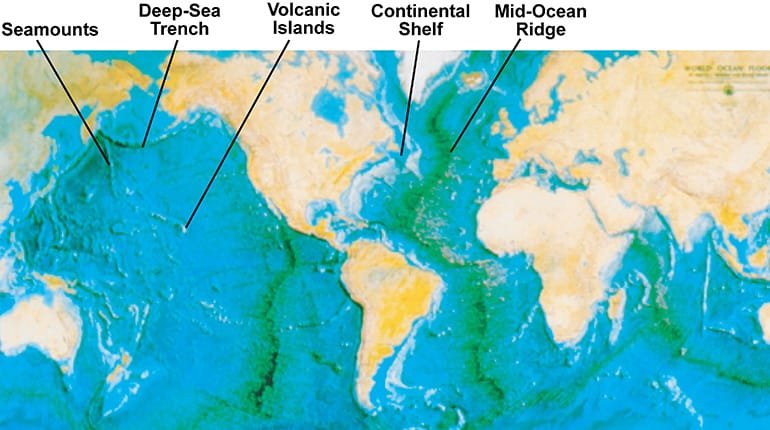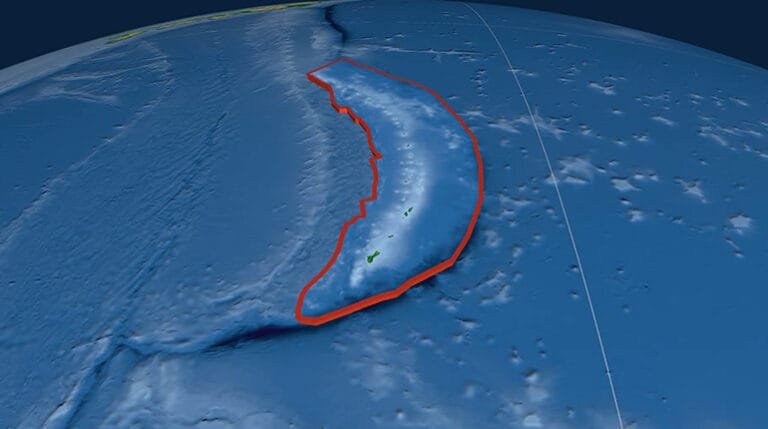The Role of Plate Tectonics in a Global Flood

The Biblical account of Noah’s Flood, a pivotal event in human history as described in the book of Genesis, remains a point of debate and discussion among theologians and scientists alike. According to the account, the Flood was not merely a localized event but a cataclysmic global phenomenon that reshaped the Earth and its ecosystems. Central to understanding the plausibility of this event is the concept of plate tectonics, the scientific theory that explains how the Earth’s lithosphere is divided into tectonic plates that continuously move and interact. Given the traditional young Earth perspective, where the Earth is approximately 6,000 years old, exploring the role of plate tectonics offers a unique lens through which we can understand the mechanics of a global flood as described in Scripture.
In this article, we will dive into the mechanisms of plate tectonics and their potential contributions to a worldwide deluge. We will examine how rapid tectonic activity could align with the Biblical narrative of Noah’s Flood, addressing common scientific objections, and providing a holistic view that harmonizes geological processes with Biblical accounts. Through this exploration, we will affirm the possibility of a global flood being consistent with both a young Earth model and the events recorded in Genesis, encouraging readers to examine the intersection of faith and science with a fresh perspective.
Understanding Plate Tectonics
To grasp how plate tectonics could play a role in a global flood, we must first understand the fundamental principles of this scientific theory. Plate tectonics describes the movements of the Earth’s lithosphere, which is broken into several large and small plates that float on the semi-fluid asthenosphere beneath. The interactions between these plates lead to a wide range of geological phenomena, including earthquakes, volcanic eruptions, and mountain-building. Such activities can dramatically alter landscapes and ecosystems in a relatively short period.
The Tectonic Plates and Their Movements
There are several major tectonic plates, such as the Pacific Plate, North American Plate, Eurasian Plate, African Plate, South American Plate, Antarctic Plate, and the Indo-Australian Plate. These plates are in constant motion, albeit at a very slow rate. Their interactions occur at three main types of boundaries:
- Convergent Boundaries: Where two plates move toward each other, often resulting in one plate being forced beneath another (subduction). This can lead to volcanic activity and the formation of mountain ranges.
- Divergent Boundaries: Where two plates move apart, allowing magma from the mantle to rise, creating new crust. This activity can cause mid-ocean ridges and can also trigger earthquakes.
- Transform Boundaries: Where two plates slide past one another. This movement can create stress that results in significant earthquakes.
The dynamic nature of these movements can influence climate, sea levels, and the distribution of water, all of which are critical when considering the global implications of a flood event as described in the Bible.
The Cataclysmic Potential of Tectonic Activity
In the context of a global flood, tectonic activity could have played a decisive role in the mechanism that led to widespread inundation. If we consider the possibility of accelerated tectonic movements, especially during a defined timeframe, we can envision scenarios where these movements would result in massive geological shifts. This could lead to a rapid increase in sea levels, large-scale volcanic eruptions that release ash and gases into the atmosphere, and even triggering tsunamis that could inundate coastal areas.
Volcanic Eruptions and Climate Impact
Volcanoes are a significant manifestation of tectonic activity, especially at convergent boundaries. In the event of an intense volcanic period, the ash and sulfur dioxide released into the atmosphere could lead to a “volcanic winter,” drastically altering weather patterns. This cooling effect could also accompany heavy rainfall, and if this continued for a period, it could add to the volume of water, contributing to a flood-like situation. The rapid melting of ice caps and glaciers due to increased volcanic heat could further exacerbate rising sea levels, lending credence to the idea of a global deluge.
Earthquakes and Tsunamis
Earthquakes, often resulting from tectonic shifts, could trigger tsunamis, which are massive ocean waves caused by underwater disturbances. A series of significant earthquakes along the ocean floors could cause such waves to surge inland, inundating large areas of land. When paired with heavy rainfall and other factors previously mentioned, the combination could lead to a catastrophic flooding scenario that aligns with the scale of Noah’s Flood as described in the Bible.
Points of Harmonization Between Faith and Science
Many skeptics argue against the feasibility of a global flood due to what they see as geological improbabilities. However, when we maintain a perspective that appreciates divine providence and intervention, the narrative becomes more coherent. Here are some points where faith and science can align:
- The Frequency of Catastrophic Events: Throughout Earth’s history, there have been numerous cataclysmic events, such as the asteroid impact that contributed to the extinction of the dinosaurs. The possibility of other significant events cannot be disregarded.
- Historical Accounts and Geological Evidence: Various cultures around the world have flood myths that bear resemblance to the Noah story, suggesting a shared memory of a catastrophic event. Additionally, some geological formations, such as sediment layers and fossil records, could be interpreted as the result of a global flood scenario.
- Technological Advances in Geology: Ongoing research and technological advancements may provide new insights into Earth’s geological past that support the Biblical narrative. The integration of data from multiple scientific disciplines could yield fresh perspectives.
Challenges and Responses
While affirming a global flood according to the Biblical account, it is essential to address common challenges faced by proponents of this view. Understanding and articulating these responses strengthens the argument for a global flood being scientifically plausible within a young Earth framework.
The Issue of Water Volume
One prominent challenge is the amount of water necessary to cover the entire Earth, particularly over the highest mountains. Traditional interpretations of the flood narrative suggest that the water was both from above (rain) and below (fountains of the deep). This dual source could provide an explanation for the volume of water required. In a young Earth framework, it is plausible to suggest that significant geological changes occurred rapidly, contributing to this abundance.
Fossil Distribution and Biodiversity
Opponents of a global flood also point to the distribution of fossils and current biodiversity as evidence against a single deluge. However, many of these challenges can be navigated through a lens of rapid burial and preservation. Catastrophic events, such as a flood, could lead to the preservation of vast numbers of species in sediment layers, explaining how we find certain fossils in distinct geological strata. Furthermore, the concept of baraminology holds that God created specific kinds of organisms that increased their differential adaptability, which would support the notion of biodiversity arising from post-Flood repopulation.
Conclusion
Examining the role of plate tectonics in the context of a global flood unfolds a fascinating intersection of faith and science. The dynamic movements of the Earth, while often viewed as separate from the Biblical account, can provide insights into how a monumental event like Noah’s Flood could occur. By understanding the mechanisms of tectonic plates—volcanic eruptions, earthquakes, and subsequent climatic shifts—we can appreciate the plausibility of a global cataclysm that aligns with the Scriptures.
Ultimately, the story of Noah’s Flood transcends mere geological interpretation; it serves as a foundational narrative in the Christian faith that teaches themes of judgment, grace, and the renewal of creation. As we integrate scientific knowledge with Biblical truth, we can affirm the credibility of the narrative while enriching our understanding of God’s creation. Therefore, rather than seeing faith and science as oppositional, it is profoundly enriching to view them as complementary lenses through which we can explore both the natural world and the profound truths of Scripture.




